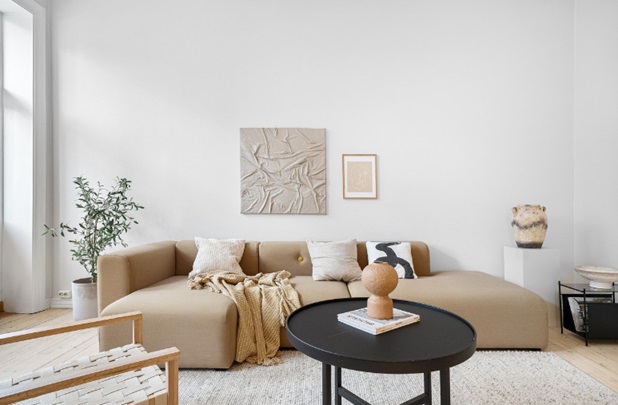Designing your dream home is an exciting journey that requires careful thought and planning. It’s not just about aesthetics but creating a space that reflects your personality, caters to your lifestyle, and enhances your well-being. Whether you’re building from scratch or remodeling, understanding the key elements that shape your living environment is crucial. From optimizing space to choosing the right materials and considering functionality, each decision impacts the overall comfort and flow of your home.
In this post, we’ll explore six essential elements to keep in mind when designing your home. These considerations will guide you in making thoughtful choices that bring your vision to life while ensuring your home remains a harmonious, practical, and inviting space for years to come. Let’s get started.
Maximize Space and Layout Efficiency
When designing your home, one of the priorities should be optimizing space to ensure it flows seamlessly. A well-thought-out layout can make even a small home feel spacious. Open floor plans can create a sense of airiness, while multi-functional spaces can serve various purposes. Think about traffic patterns, ensuring there’s enough room to move around comfortably without overcrowding.
Consider how you use each space and if it meets your lifestyle needs. For example, if you enjoy hosting guests, an open dining and living room might be ideal. Additionally, strategically placing storage solutions can reduce clutter and keep your home organized, which ultimately enhances its livability.
Choose the Right Furniture for Function and Style
Furniture is a cornerstone of home design, not only for its functionality but also for the style it brings to the space. As seen at Futonland.com, there are different types of furniture pieces designed to fit diverse spaces and needs, from minimalist modern designs to classic styles. Choosing the right furniture involves balancing comfort, utility, and aesthetics. Consider the size of the room to ensure your furniture doesn’t overwhelm the space.
Opt for multi-purpose pieces, such as a sofa bed or a coffee table with built-in storage, which can enhance both functionality and visual appeal. Think about how your furniture interacts with other design elements like color schemes and textures to create a cohesive look.
Lighting Design and Ambiance
Lighting plays a crucial role in home design, influencing both the functionality and mood of each room. A combination of natural light, task lighting, and ambient lighting creates a balanced atmosphere. Maximize natural light with strategically placed windows, mirrors, and light-colored walls that reflect sunlight throughout the day.
For artificial lighting, layer different sources—overhead lights, table lamps, and sconces—to create warmth and depth. Dimmer switches are also a great addition, offering flexibility to adjust lighting based on the time of day or the activity. Proper lighting can not only highlight architectural features but also make a room feel more inviting and spacious.
Select Durable and Aesthetic Materials
The materials you choose for your home design will affect both its longevity and visual appeal. Durability should be a priority when selecting surfaces, flooring, and finishes. For high-traffic areas, consider materials like hardwood, tiles, or durable vinyl that can withstand wear and tear. In the kitchen and bathroom, surfaces like quartz, granite, or porcelain are ideal due to their resistance to stains and moisture.
Simultaneously, ensure that the materials align with the overall design aesthetic of your home. From sleek modern finishes to natural textures, the materials you use should not only serve a functional purpose but also elevate the space’s style.
Personalizing Your Home with Color and Decor
Color and decor are powerful tools that can transform the personality of a space. A carefully chosen color palette can evoke different emotions and enhance the functionality of each room. Lighter tones, such as whites, creams, and pastels, tend to make spaces feel more open and airy, while darker shades can add warmth and coziness.
Don’t be afraid to mix bold accent colors or textured decor elements like rugs, cushions, and art to create visual interest. Personal touches, such as family photos, heirlooms, or souvenirs from travels, can infuse your home with character and make it uniquely yours. The key is balance—maintaining a harmonious flow between color, decor, and furniture.
Sustainability and Eco-friendly Design Choices
More homeowners are prioritizing sustainability in their design choices, aiming to create environmentally responsible spaces that are both energy-efficient and eco-friendly. This starts with selecting sustainable materials like bamboo, reclaimed wood, or recycled glass. You can also incorporate energy-efficient appliances, lighting, and heating systems to reduce your carbon footprint.
Proper insulation and windows that allow natural ventilation can help maintain an ideal indoor climate without over-relying on heating or cooling systems. Even smaller decisions, like opting for eco-friendly paints or installing water-saving fixtures, can make a significant impact. By considering these green choices, you’re not only contributing to a healthier planet but also creating a home that’s comfortable and future-proof.
Designing your home is an exciting opportunity to create a space that reflects your unique style, meets your practical needs, and enhances your quality of life. By focusing on key elements like maximizing space, choosing the right furniture, optimizing lighting, selecting durable materials, personalizing with color and decor, and making sustainable choices, you can design a home that is both beautiful and functional. Remember, thoughtful planning and attention to detail will ensure your home remains a comfortable, welcoming environment for years to come, providing a perfect balance of aesthetics, comfort, and practicality.
